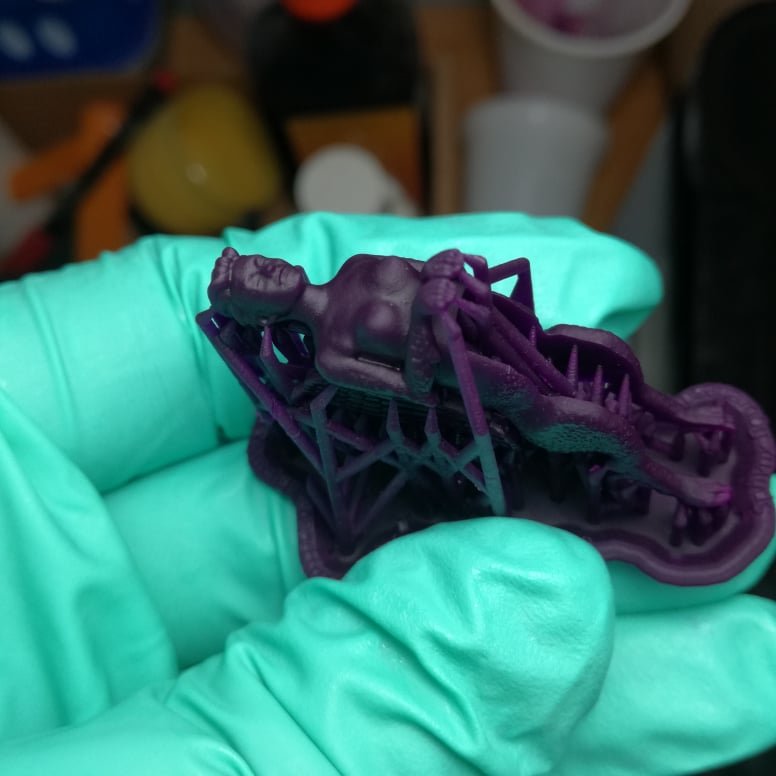-
Posts
2,286 -
Joined
-
Last visited
Content Type
Profiles
Forums
Gallery
Events
Everything posted by chris watton
-
I would recommend using matt only, not satin and especially not gloss, for the clear varnish.
- 382 replies
-
- Vanguard Models
- Duchess of Kingston
-
(and 1 more)
Tagged with:
-
A little update. It has come to my attention that a lot of emails have gone unanswered. I can only apologise, the email account was not added to my main accounts, as I thought all mail came via 'enquiries@..' I feel really bad about this, as there are a lot of emails from people that I didn't even know I had, and must have thought I was ignoring them. However, this has now been resolved, so no more unanswered emails! Sorry, Chris
-
I am working on it, just CAD stuff though, so no nice pics to show. Mainly masts and yard drawings, just to get the laser cut and PE associated with these assemblies nailed. I do have the sample cast resin stern and figurehead decoration arriving next week, and the PE for the three ships boats arriving too. These will be included in the Sphinx kit, but also available to buy as separate mini kits once ready (22 foot yawl, 24 foot launch and 28 foot pinnace) I am back at work full time, too, which is a pain, and I have had to spend a lot of time at the laser machine, cutting production parts for existing kits
-
Just a little update - In case some of you tried to make purchases on my website with a credit card and payment not completing, I had a long talk with the payment gateway tech support, and it appeared that one of my payment plug ins was not updated to to the latest version (should have done it automatically). We have now installed a new plug in that WorldPay gave me, which seems to have solved the payment fail problems. If you did try and order and wonder what the hell was wrong, sorry, it wasn't you, it was a pesky plug in... All is fine now...
-
Could it be for the drift rails, I wonder?
-
I had to log off and go to work when I typed that reply. I meant to add that the cannon are of the Armstrong pattern, as most of the subjects I will be doing are from around 1720-1800 - although I do know that after 1794, the Bloomfield pattern was to become standard in the navy (where the loop was forged over the knob on the cascabel).
-
I now have 1:64th carronade kits available. These are: 12 Pounder early carronade with choice of truck or sliding carriage. (These really are quite dinky...) 18, 24 and 32 Pounder carronades. They are sold as singles and include the black resin barrel, PE and laser cut pear carriage parts. For the 18, 24 and 32 Pounder carriages, there are choices for mounting on the deck or on the lower gun port opening ledge. In the pics, the trunnion bracket on the carronade barrels overhang the upper bed slightly, it does not on the production kit parts. https://vanguardmodels.co.uk/product/carronade-kits/ Also available now is the 18 Pounder short barrel.
-

Ships at Trafalgar - what kits are available?
chris watton replied to bruce d's topic in Wood ship model kits
That is true, but you still need someone very good to digitally sculpt the parts, and that's before high quality 3-d printing costs. That book is very good, with many fascinating letters, I loved the ones from the French side, after the Nile. -

Ships at Trafalgar - what kits are available?
chris watton replied to bruce d's topic in Wood ship model kits
Not sure about conversion kits, as it is the most expensive parts like figureheads and any decoration that would need to change. I think the closest I have come is the three ship options for Vanguard. I do have an idea for some future kits, though, regarding choice. For those who like the details and dispatches for the battles, this book (or MP3 CD) is terrific, highly recommended: https://www.amazon.co.uk/Hour-Victory-Royal-Navy-Nelson/dp/0857895737/ref=sr_1_1?crid=1JUX9AEIEYMLV&dchild=1&keywords=in+the+hour+of+victory&qid=1605881752&sprefix=In+the+hour%2Caps%2C169&sr=8-1 Certainly throws new light on some aspects of the battles it includes, especially the Nile and Trafalgar -

Ships at Trafalgar - what kits are available?
chris watton replied to bruce d's topic in Wood ship model kits
Problem is, if one were to produce kits of most of the vessels at Trafalgar, many would look almost identical, especially with the 74's. Most would not be able to discern the difference between Victory, Temeraire, Prince, Neptune or Royal Sovereign for the 3-deckers. -
I have been listening to the Hornblower audio books when at work, they are certainly more fast paced than the Aubrey books (some of the latter can get a little exasperating, for example, a very long winded chapter dedicated to land enclosures). But I do like the fact that the Aubrey novels use real ships names and the historical side is spot on. One thing that grated slightly when listening to 'Lord Hornblower' last night, is when Hornblower is chatting to this old sailor and they're reminiscing about the days on the old Indefatigable with Pellew in 1792 or 1793, when it wasn't commissioned as a razee frigate until December 1794. But that's nit picking, the stories are great, and on the whole, pretty fast paced.
-
Me too, more times than I dare say...
- 382 replies
-
- Vanguard Models
- Duchess of Kingston
-
(and 1 more)
Tagged with:
-
There was a 'stray' slot on parts 16, the inner longitudinal patterns (Bulkhead 10 area) that was 3mm instead of 3.1mm. I have since corrected this, but for all the ones that have been cut already, the one slot is 3mm. The slot in Bulkhead 10 is 3.1mm, so it is only the one slot on parts 16 that is affected. Under normal circumstances, the 3mm would be fine, but as there are a lot of parts to slot into each other, it really should be 3.1 to make a hassle free fit.
-

Ships at Trafalgar - what kits are available?
chris watton replied to bruce d's topic in Wood ship model kits
I think Spartiate would be a cool one to do, great name, too. Am sure Bellerophon is available, via the Vanguard kit. -
That's looking good, Glenn, sanding looks spot on.
- 382 replies
-
- Vanguard Models
- Duchess of Kingston
-
(and 1 more)
Tagged with:
-
Forgot to add, I had the production sets of carronade barrels arrive today, so they will be going on the website sometime next week. I have: 32 Pounder carronade barrel, slide carriage and PE (Standard armament of most British brigs/brig-sloops of the French Revolutionary and Napoleonic era - an 18 gun brig like Cruiser would have had 16x32 pounder carronades and 2x6 pounder chase guns) 24 Pounder carronade barrel, slide carriage and PE 18 Pounder carronade barrel, slide carriage and PE 12 Pounder carronade barrel (early type with trunnions), with option of slide carriage or side carriage (like standard cannon) and PE Also available now is an 18 pounder short (42.75mm overall length), which were issued to most (but not all) 38 gun frigates
-
The only parts that have tight tolerances are the the bulkheads and keel that slot into each other. These are 3mm exactly. All other slots have slightly looser tolerances at 3.1mm, to take into account any slight (and I mean slight) misalignment when fitting parts like 16 and 17. It is best to bevel some of the extreme frames before fitting, and once fitted, and if the extreme bulkheads and longitudinal patterns have been roughly bevelled, brush on PVA glue when all is in place. Do not rush any of this, as it is essential all parts are fitted as designed and bevelled correctly for the planking.
- 382 replies
-
- Vanguard Models
- Duchess of Kingston
-
(and 1 more)
Tagged with:
-
The longitudinal patterns (16&17) will fit fine, the slots in those are 3.1mm, plus 3.1mm wide on the bulkheads for the patterns to slot into.
- 382 replies
-
- Vanguard Models
- Duchess of Kingston
-
(and 1 more)
Tagged with:
-
Pear wood was initially meant to be for the 'Master Shipwright' kits, but I realised very quickly that limewood was way too fragile for the type of designs I had in mind, plus I winced when seeing close up shots of the limewood parts, being quite open grained. This is OK if the parts are to be painted and the parts are prepped correctly, otherwise, I just didn't like it and realised that if the kits were to be a little different from the more 'commercial' kits I have designed in the past, I must invest in better quality (closer grained and less fragile) woods. Once I got to know the properties of pear better, this opened a lot more options for me, like pre-cut drift rails, which would have been a disaster in more open grained woods, with parts breaking when just trying to remove the parts from their retention tabs (One of the main reasons I always endeavour to place the tabs along the grain, rather than against it).
About us
Modelshipworld - Advancing Ship Modeling through Research
SSL Secured
Your security is important for us so this Website is SSL-Secured
NRG Mailing Address
Nautical Research Guild
237 South Lincoln Street
Westmont IL, 60559-1917
Model Ship World ® and the MSW logo are Registered Trademarks, and belong to the Nautical Research Guild (United States Patent and Trademark Office: No. 6,929,264 & No. 6,929,274, registered Dec. 20, 2022)
Helpful Links
About the NRG
If you enjoy building ship models that are historically accurate as well as beautiful, then The Nautical Research Guild (NRG) is just right for you.
The Guild is a non-profit educational organization whose mission is to “Advance Ship Modeling Through Research”. We provide support to our members in their efforts to raise the quality of their model ships.
The Nautical Research Guild has published our world-renowned quarterly magazine, The Nautical Research Journal, since 1955. The pages of the Journal are full of articles by accomplished ship modelers who show you how they create those exquisite details on their models, and by maritime historians who show you the correct details to build. The Journal is available in both print and digital editions. Go to the NRG web site (www.thenrg.org) to download a complimentary digital copy of the Journal. The NRG also publishes plan sets, books and compilations of back issues of the Journal and the former Ships in Scale and Model Ship Builder magazines.






